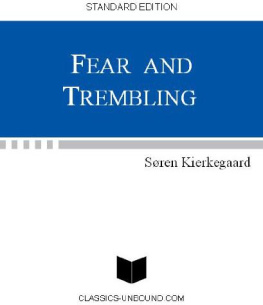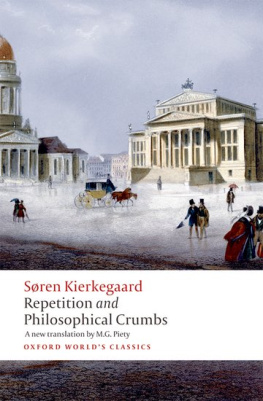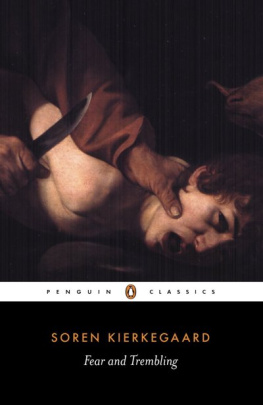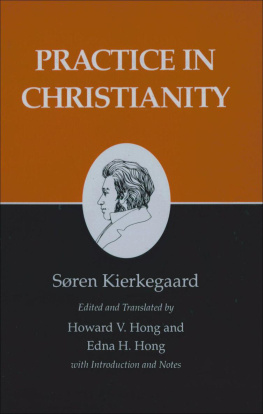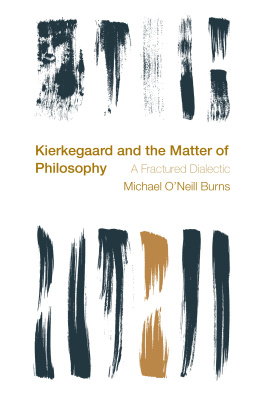Soren Kierkegaard - Either Or, Part I
Here you can read online Soren Kierkegaard - Either Or, Part I full text of the book (entire story) in english for free. Download pdf and epub, get meaning, cover and reviews about this ebook. year: 1987, publisher: Princeton University Press, genre: Science. Description of the work, (preface) as well as reviews are available. Best literature library LitArk.com created for fans of good reading and offers a wide selection of genres:
Romance novel
Science fiction
Adventure
Detective
Science
History
Home and family
Prose
Art
Politics
Computer
Non-fiction
Religion
Business
Children
Humor
Choose a favorite category and find really read worthwhile books. Enjoy immersion in the world of imagination, feel the emotions of the characters or learn something new for yourself, make an fascinating discovery.

- Book:Either Or, Part I
- Author:
- Publisher:Princeton University Press
- Genre:
- Year:1987
- Rating:3 / 5
- Favourites:Add to favourites
- Your mark:
- 60
- 1
- 2
- 3
- 4
- 5
Either Or, Part I: summary, description and annotation
We offer to read an annotation, description, summary or preface (depends on what the author of the book "Either Or, Part I" wrote himself). If you haven't found the necessary information about the book — write in the comments, we will try to find it.
Either Or, Part I — read online for free the complete book (whole text) full work
Below is the text of the book, divided by pages. System saving the place of the last page read, allows you to conveniently read the book "Either Or, Part I" online for free, without having to search again every time where you left off. Put a bookmark, and you can go to the page where you finished reading at any time.
Font size:
Interval:
Bookmark:
EITHER/OR
PART I
KIERKEGAARDS WRITINGS, III

PART I
by Sren Kierkegaard
Edited and Translated
with Introduction and Notes by
Howard V. Hong and
Edna H. Hong
PRINCETON UNIVERSITY PRESS
PRINCETON, NEW JERSEY
Copyright 1987 by Howard V Hong
Published by Princeton University Press,
41 William Street, Princeton, New Jersey 08540
In the United Kingdom: Princeton University Press, Guildford, Surrey
All Rights Reserved
Library of Congress Cataloging in Publication Data will be found on the last printed page of this book
ISBN 0-691-07315-5 (cloth)
ISBN 0-691-02041-8 (pbk.)
Preparation of this volume has been made possible in part by a grant from the Division of Research Programs of the National Endowment for the Humanities, an independent federal agency
Clothbound editions of Princeton University Press books are printed on acid-free paper, and binding materials are chosen for strength and durability. Paperbacks, though satisfactory for personal collections, are not usually suitable for library rebinding
Designed by Frank Mahood
Printed in the United States of America by Princeton
University Press, Princeton, New Jersey
In a journal entry from 1846, Kierkegaard stated that Either/Or was written lock, stock, and barrel in eleven months. At most there was only a page (of Diapsalmata) prior to that time. As far as that goes, I have spent more time on all the later works. Most of Either/Or was written only twice (besides, of course, what I thought through while walking, but that is always the case); nowadays I usually write three times. the editors preface to Either/Or was finished, and the two volumes were published February 20, 1843.
Before the journey to Berlin, Kierkegaard had written a draft of Judge Williams The Esthetic Validity of Marriage,
In February 1842, he wrote to Boesen:
It is absolutely imperative that I return to Copenhagen this spring. For either I shall finish Either/Or by spring, or I shall never finish it. The title is approximately that which you know. I hope you will keep this between us. Anonymity is of the utmost importance to me....
Either/Or is indeed an excellent title. It is piquant and at the same time also has a speculative meaning. But for my own sake I will not rob you prematurely of any enjoyment.
This winter in Berlin will always have great significance for me. I have done a lot of work. When you consider that I have had three or four hours of lectures every day, have a daily language lesson, and have still gotten so much written (and that regardless of the fact that in the beginning I had to spend a lot of time writing down Schellings lectures
Schelling talks endless nonsense both in an extensive and an intensive sense. I am leaving Berlin and hastening to Copenhagen, but not, you understand, to be bound by a new tie, oh no, for now I feel more strongly than ever that I need my freedom. A person with my eccentricity should have his freedom until he meets a force in life that, as such, can bind him. I am coming to Copenhagen to complete Either/Or. It is my favorite idea, and in it I exist. You will see that this idea is not to be made light of. In no way can my life yet be considered finished. I feel I still have great resources within me.
I do owe Schelling something. For I have learned that I enjoy traveling, even though not for the sake of studying. As soon as I have finished Either/Or, I shall fly away again like a happy bird. I must travel. Formerly I never had the inclination for it, but first I must finish Either/Or and that I can do only in Copenhagen.
Although only a few journal entries from earlier writing were used as diapsalmata in Either/Or,
Despite the tension indicated by the very title Either/Or and publication in two separate volumes, Kierkegaard regarded the work as having a plan from the first word to the last,
Three years later, and again eighteen years later, Kierkegaard reaffirmed the integrality of the complex series of writings
As part of the whole including the pseudonymous works, Either/Or lacked one element, according to Kierkegaard: a narrative section or an imaginary construction
In an appendix to Concluding Unscientific Postscript, inner and the outer, concealment and openness, imagination and actuality, thought and actuality, knowledge and action.
In addition to the relation of Either/Or to the other pseudonymous works, there is another kind of relation to the parallel series of signed works that began with Two Upbuilding Discourses, published (May 16, 1843) This self-description accounts not only for the conscious and deliberate duplexity (differentiated parallelism) of the two writing series but also for the linear development and dynamic coherence of the entire authorship. Therefore, in a journal entry from 1848 he could write:
Yes, it was a good thing to publish that little article. I began with Either/Or and two upbuilding discourses; now it ends, after the whole upbuilding serieswith a little esthetic essay.
The dialectical complexity of the pseudonymous series of writings and the duplexity of the two differentiated parallel series were Kierkegaards way of combining Socratic maieutic indirection in the one series and the direct approach in the other. In The Accounting, in On My Work as an Author, Kierkegaard explains why he used the pseudonymous approach:
The maieutic lies in the relation between the esthetic productivity as the beginning and the religious as the o [goal]. It begins with the esthetic, in which possibly the majority have their lives, and then the religious is introduced so quickly that those who, moved by the esthetic, decide to follow along, are suddenly standing right in the middle of decisive qualifications of the essentially Christian, are prompted at least to become aware.
Kierkegaard went to great lengths to protect the pseudonymity of Either/Or. Not only was the transcribing of the final copy done by various hands,
If I wanted to tell about it, a whole book could be written on how ingeniously I have fooled people about my pattern of life.
During the time I was reading proofs of Either/Or and writing the upbuilding discourses, I had almost no time to walk the streets. I then used another method. Every evening when I left home exhausted and had eaten at Minis, I stopped at the theater for ten minutesnot one minute more. Familiar as I was, I counted on there being several gossips at the theater who would now say: Every single night he goes to the theater; he does not do another thing.
The pseudonymity of Either/Or was reinforced by a signed disclaimer, Public Confession, in which Kierkegaard declined the undeserved honor of being regarded as the author of a number of substantial, informative, and witty articles in various newspapers and requested the good people who show an interest in me never to regard me as the author of anything that does not bear my name.
There was one reader, however, Regine Olsen, whom Kierkegaard wanted to discern him behind the pseudonyms, especially the writer behind the pseudonymous diary, as part of his plan to make it easier for her to part with him. When I left her, I begged God for one thing, that I might succeed in writing and finishing Either/Or (this was also for her sake, because
Next pageFont size:
Interval:
Bookmark:
Similar books «Either Or, Part I»
Look at similar books to Either Or, Part I. We have selected literature similar in name and meaning in the hope of providing readers with more options to find new, interesting, not yet read works.
Discussion, reviews of the book Either Or, Part I and just readers' own opinions. Leave your comments, write what you think about the work, its meaning or the main characters. Specify what exactly you liked and what you didn't like, and why you think so.

